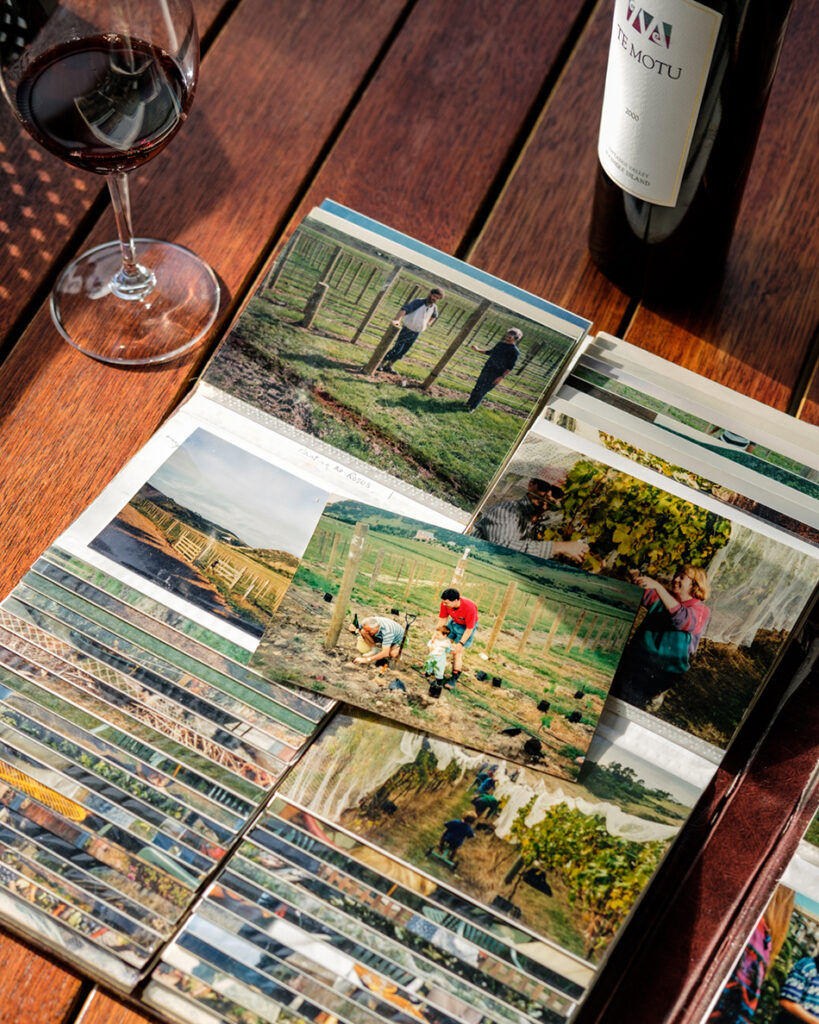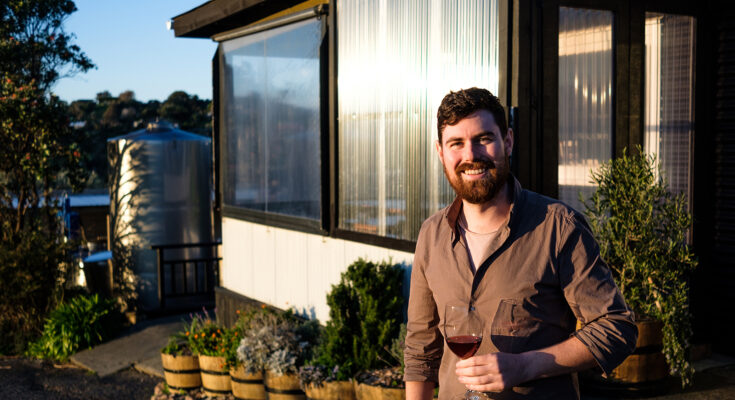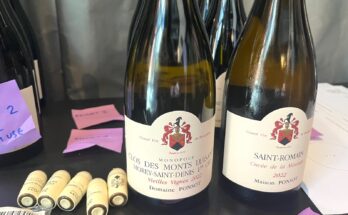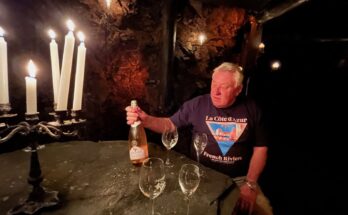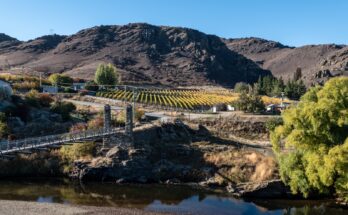We’re on Waiheke – it is a sunny afternoon, and Gabor and I are talking to Rory Dunleavy about the history of Te Motu and what is happening around the place now.
WineFolio: What’s your part in Te Motu today?
Rory Dunleavy: I play a little part in all of it these days shouldering the responsibility of the GM role. I grew up a little bit more on the hospitality side of the business, helping out the restaurant and cellar door teams during my summer breaks. There wasn’t a firm pressure to jump right into the family business, I was encouraged to go off and do my own thing, and chase my own passions. For me that was taking a creative path. I studied Fine Art at Elam, moved to the UK and lived there for a while after art school. Back in Auckland, worked in advertising as an art director – lots of creative problem solving – for quite a few years. And then slowly started dipping my toes back in. Joined for vintage about four years ago now, and really loved being involved in the wine side of things.
What was irresistible to me about the world of wine, is that it is where art meets science. When you’re doing it at a small scale, there’s so much craft and care involved. You do end up with an artisanal product that you’ve had a hand in shaping, something to be proud of.
For me there’s a similar parallel to our approach to cuisine in our restaurant. Being a small producer ourselves, we want to deal with suppliers who bring a similar level of attention to detail to their craft. We care immensely about food provenance, and in addition to growing our own, we support a lot of small growers. A good example is our supplier Farmgate produce who grow the best pork in the country, hands down. They’ve got eighty hectares of coastal farmland up past Kaitaia, with heritage breed pigs. Our Head chef took his family for a road trip about a year ago and they popped in there and visited the farm. There’s pictures of them nursing the little piglets down on the beach. With the level of care they take in growing these animals, being able to take a whole beast and use every part of it, doing our own in-house charcuterie, and dining nose to tail is just awesome for us.
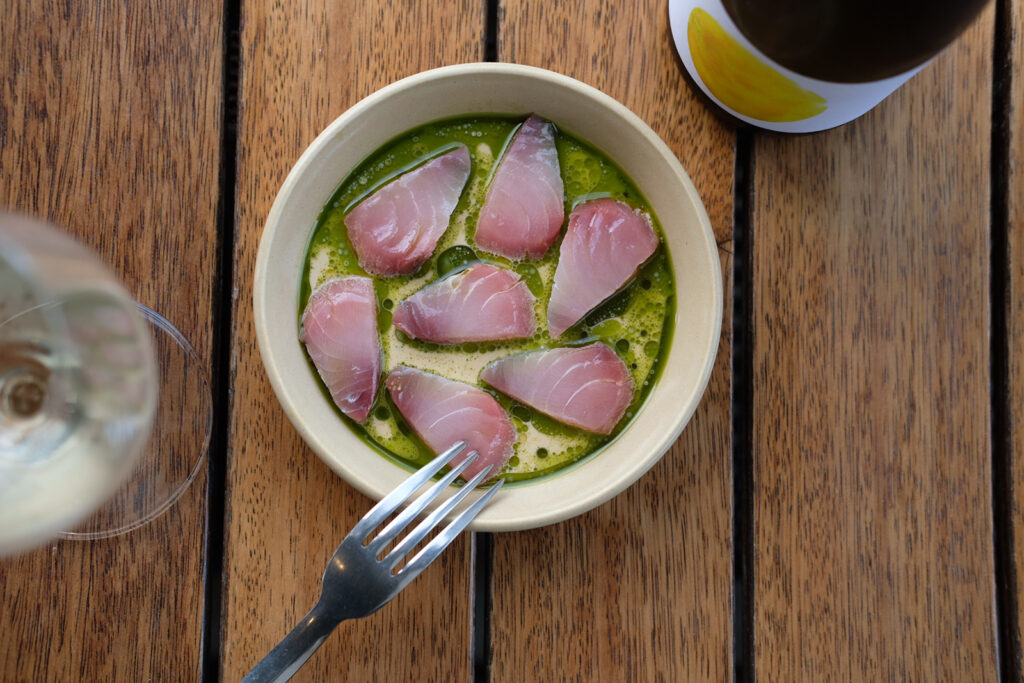
WF: I remember Paul loved doing that himself – making his own patés and terrines. I mean going back 25 years – but it is nice that you’ve kept up that tradition. How is your Dad by the way?
RD: He’s good – he’s quite involved in some larger scale operations in Marlborough these days (300 ha in the Awatere valley).
It’s an interesting story – due to challenging times off the back of the Global Financial Crisis the family sold our stake in Te Motu, in 2008. With the proceeds of the sale he invested wisely in Marlborough.
My uncle John had stayed on here at Te Motu as winemaker to maintain consistency for the new owners Richard and Tina Yan. It was a passion project for them but their main business – a large construction company they were involved in ran into difficulties, and off the back of that members of our family along with a syndicate of family friends stepped in to purchase it back in 2013. We picked up the property between us and Stonyridge in the process – the old Airfield – which will be one of our next projects to develop.
WF: So you’re going to be planting something there?
RD: It’s definitely on the cards. Over the past few years the focus has been on improving the health of the vineyard and bringing the existing blocks up to full production. Most of the vines went in around thirty years ago now. We’d have some of the oldest vines on the island, and they are still going strong- but you lose a lot over the years, so the past three winters we’ve done a lot of interplanting, filling the gaps in our existing canopy, and we’ve added a few new varieties over the last couple of seasons. Petit Verdot, and a little Carménère.
In terms of our next planting site, we have another part of the valley to the East that we are very excited about, which could be excellent for Syrah, or more Cabernet Franc. The airfield has quite a different pitch than the rest of the estate, sloping slight to the south rather than the north so it could be a slightly cooler site, it’s we’ll have to have a good look at the soil too, but the thinking is it could provide an excellent opportunity to add some Waiheke white to our portfolio.
WF: I have a look back at the year around about now and do a column about my favourite wines of the year. And I realised that I can’t really write it until I’ve been out to Waiheke – the wine of the year could be out here waiting to be discovered! Is there still good demand for those blockbuster, premium reds?
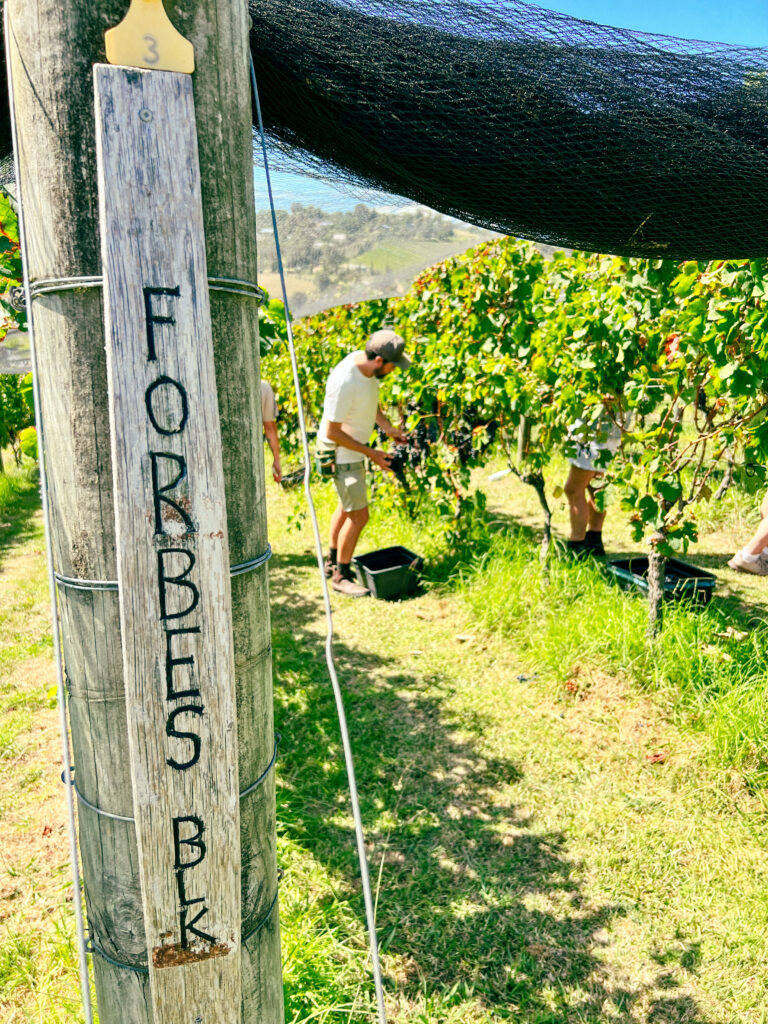
RD: Our wine club has been building steadily year to year, and the demand through the hospitality trade now is starting to grow again as well. COVID years aside – the rise of wine tourism to the island over the years has really helped.
WF: Yeah – I don’t know where Auckland tourism goes from here – it was a case of ‘managing’ visitors, not ‘attracting more’ visitors pre Covid; and Waiheke would get a million tourists a year. But I’d expect Waiheke to be the shining light with any return to tourism as we knew it?
RD: I guess it is a time for everyone to brace themselves and get ready for it, because, if nothing else, you’ve seen New Zealand in the news so much over the past year and a half – globally.
WF: I wish that New Zealand could move beyond being somewhere that has great ingredients – like oysters, dairy, honey, lamb… but could develop a definite ‘food style’ so that became part of our tourism identity. We absolutely have those great raw ingredients, but what is ‘kiwi cuisine’? And to be honest, wine is perhaps the one thing that is grown on our land, and then turned into something that is world class and identifiably a New Zealand showcase. I love your wine list by the way – I’m a fan of Helio!
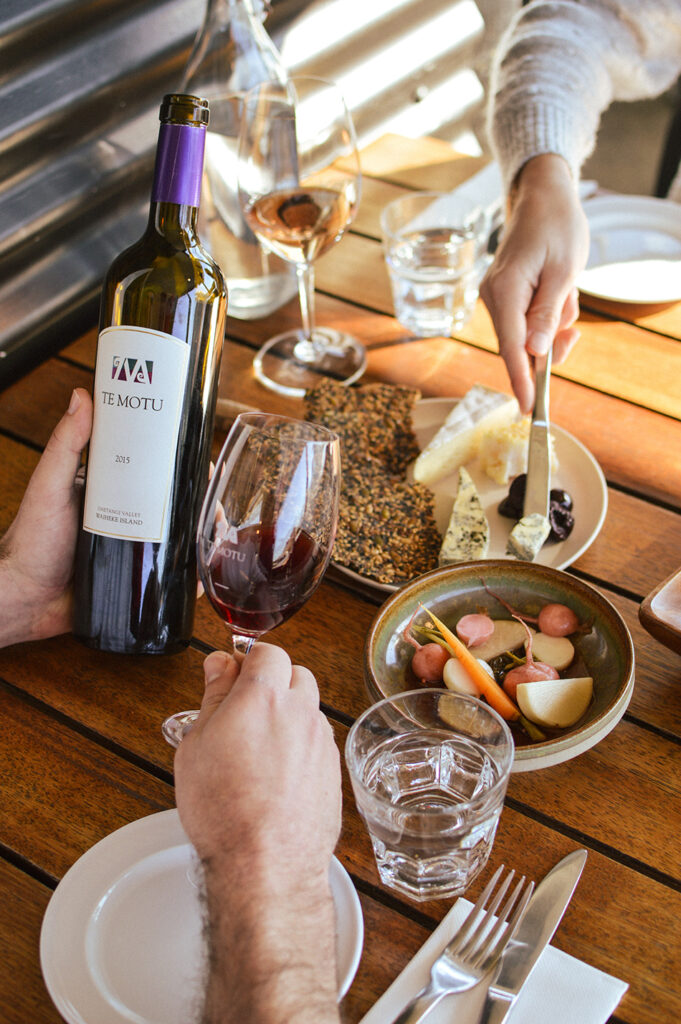
RD: I haven’t met Mat (Kirby) in person, but Dave Nash is a good mate. I knew of Dave from my advertising days, and then met him properly when he was filming A Seat at the Table, and we’ve done a bit of work together and collaborated on a few tasting events in town. To bolster the wine list varieties we don’t produce ourselves, it’s ever changing but we do try to support family friends or other growers who’ve had a strong connection to us over the years like the Brajkovich’s, and Hunters, or contemporary winemakers we admire like Tamra (Kelly Washington), Paul Pujou (Prophets Rock).
Of our own wines on the list, Te Motu is our flagship, a Cabernet Sauvignon dominant Bordeaux blend made with balance and longevity in mind. It’s brother the ‘Kokoro’ meaning the patriarch, a nod to my Grandfather Terry – has a little less time in barrel, and is Merlot dominant.
So we’ve got left and right bank styles. In a particularly challenging year we might forgo producing a Te Motu – it tends to be the later ripening Cabernet that cops it if the season takes a turn.
In 2017 for example Kokoro was the top tier we produced. Our Cabernet got hammered by some pretty gnarly rain events, and shrivelled on the vine. Thankfully those rain clouds had a silver lining, the raisins tasted great and from them we produced a late harvest Cabernet Sauvignon ‘The Nectar’. The seasons have been too good in recent years for another batch!
Vintage variability is always a challenge to contend with, but often that’s where things get exciting. What I’ve always found fascinatingly interesting about these wines is that they do slip in and out of phases as they evolve through the years, not a parabolic curve, more of a series of waves. Even the lesser vintages often drift off and then come back, and end up really blowing us away. For example our 2012 vintage – it’s been a sleeper hit. In its early years it felt like it was missing the x factor but it has really developed into something incredible.
With the Estate we treat every block, every wine is in competition to be in the Te Motu blend. There’s been very few times that we only made one wine, like in 2010. Incredible vintage for us. Big wine, very powerful. When we were preparing to release the 2013s we tasted the two of them blind side by side, and we picked the 10 as the younger, tighter wine. Our current release is from the 2016 vintage, and there’s no desperate rush to get it out of our cellar. It’s got plenty of life ahead of it.
Well – this wine here is an entirely new one! This is the first release of our premium Syrah. We only make a couple of barrels of it. I waxed the caps of these bottles by hand, and this just so happens to be the first time I’ve opened a bottle now that they’ve got the wax on.
This wine, the ‘Kuikui’ is named for my Grandmother Margaret, who – to us – is as much of a legend as Terry is. She loves plants and gardening which brushed off on her kids. She was here on day one and helped in planting the vines. Mother of eleven children and an absolutely inspirational figure to us, so we thought we’d best have a top tier wine dedicated to her as well.
WF: How much emphasis do you put on the land here, compared to making wine?
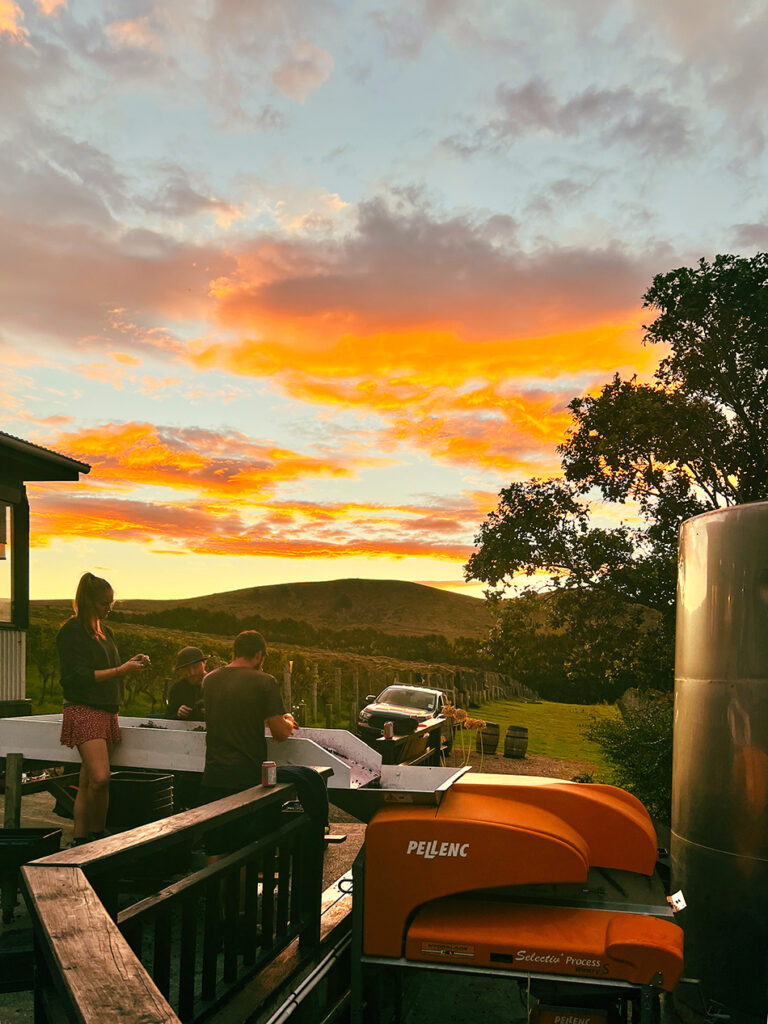
RD: We’re very lucky with this site in the Onetangi Valley. The northern facing slopes, combined with Waiheke’s warmer microclimate makes for one of the best environments in the country for ripening Cabernet. The approach here has always been to ‘make our wine in the vineyard’ – we’re after the best quality fruit we can possibly bring in, to afford a more sympathetic approach to wine. Carefully managing the canopy and fruit set, thinning to optimal low yields are our key tools. Come vintage we tend to pick with smaller crews who know what they’re looking for. We might pick a couple of tonnes a day, each parcel in it’s own ferment. Our winemaker Matt and I will often be the ones on the sorting table. We’re relatively low tech in our winery but we’ve made investments where it counts. I think we were one of the first small vineyards in the country to invest in a Pellenc Selectiv de-stemmer, and they do such a fantastic job, incredibly gentle.
From a winemaking perspective, we’re not heavy-handed. We won’t make an intervention unless it’s going to improve the wine. We’re fairly generous with the amount of time our top wines spend in oak, which reduces the need for fining. We look for a balanced expression, using no more than 30% new oak. We like having the presence there to support the wine’s structure and longevity, but not to dominate. Balance and restraint are key.
WF: This wine has a lovely delicate quality to it – not too peppery, and with lovely deep fruit – mulberry, bitter cherry juiciness – ripe but savoury. It has a big heart to it – very generous across the palate. It feels very ready to go – it’s got a great balance. Was this made for this project, or did you stumble across something in the cellar six years on?
RD: I first tasted this when we were doing the initial tasting and writing notes ahead of the release of the 2015 Te Motu. We pulled out a couple of bottles from the barrel room – neither of which were labelled, and one was accidentally this. The other was Te Motu. I went “shit, these aren’t the same wine” but “this is gorgeous – what is it!?” (laughs). Worked out that this was the Syrah! No-one had got around to sorting the labelling. We’ve got 600 bottles and handful of magnums. A lot of it will get snapped up by our Wine Club Members.
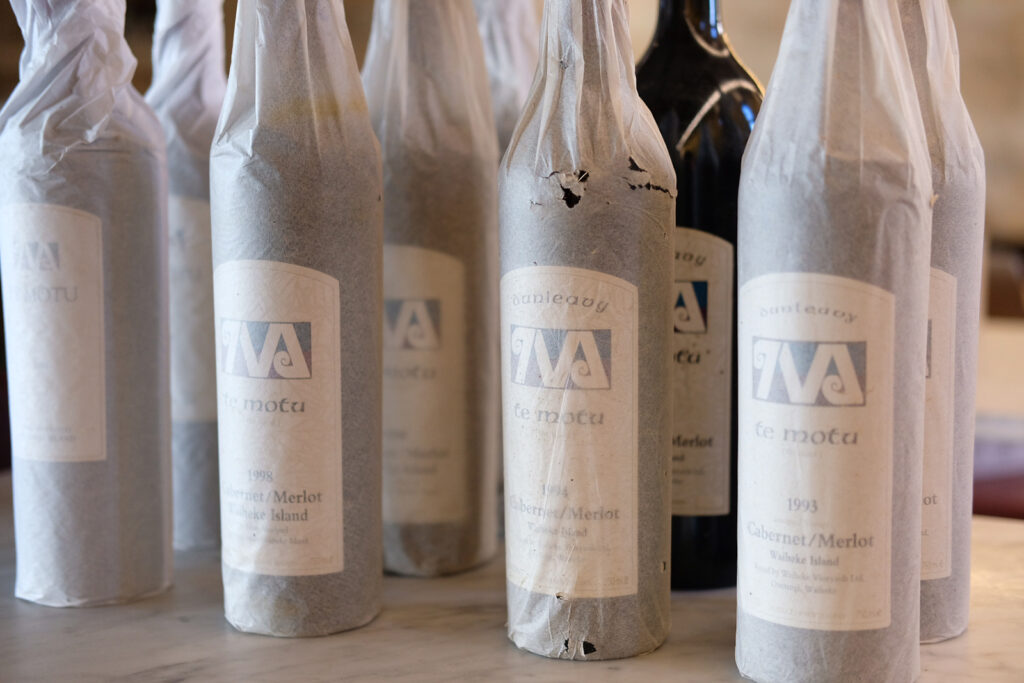
WF: Sometimes when a wine is that well balanced, it can almost become a bit bland. This has enough character to save it from that. Everything is there, in the right place, right now. I love that it has a lightness of touch, but an underlying power. But I was just saying to Gabor – another five years and that will be sublime.
RD: In ’15 our Syrah Block had quite a lot of green berries throughout the canopy, and awkward fruit set due to wild spring weather. The riper fruit was exceptional, so my cousin Sam made it a personal mission to remove every green berry, bunch by bunch. After that my Uncle John who was winemaker at the time, handed Sam the reins and let him make the wine.
This block of Syrah was originally planted to add a touch of hermitage to our Bordeaux blends. It would have to be amongst the oldest Syrah planted on the island.
It’s a fair point to note that we do hold our releases back, which is unusual for us kiwis. The appreciation of aged wine is more of a European trait right David?
Dad was always fond of the claret style, Dad would cite Tom McDonald and the reds he was producing in Hawkes Bay as one of his biggest influences toward shaping the vision for Te Motu.
Seeing the potential for high quality NZ reds being realised, and tasting through the old world benchmark French First Growths with Tom at the Hawkes Bay club on the regular sounds like a dream education in wine to me. I suppose back then those wines weren’t so expensive.
WF: It’s funny because I’ll sometimes tell people here in New Zealand, the things I used to drink back in the UK thirty years ago – and they don’t believe you! It wasn’t every day drinking, but it certainly wasn’t 9,000 dollars a bottle either.
RD: I’ll have to take your word for it!
It’s a shame the prices have become so unattainable, I’d love to see more benchmarking and comparative tastings between NZ ultra premium reds but it comes at such a cost if you include notable examples from the left bank.
In our formative years – by chance we were incredibly lucky to have a valuable link with Bordeaux. Dr Paul Pontallier, the chief oenologist and director of Chateau Margaux, tasted one of our early vintages at Alain Ducasse’s restaurant in Paris. Astonished that this wine was being made down here in New Zealand, he arranged a visit to Te Motu in early 1996, sharing with us some old world wisdom. Off the back of that, John was invited to join Margaux for their 1996 vintage.
It seems like ancient history now, but what’s incredibly special to me is that by taking the approach they have, to produce this style of wine – always with longevity in mind – I’ve been able to appreciate and learn from those early vintages – tasting our family history. It bodes well for the future that at this point in time our first vintage, the 1993 is still holding up beautifully.
